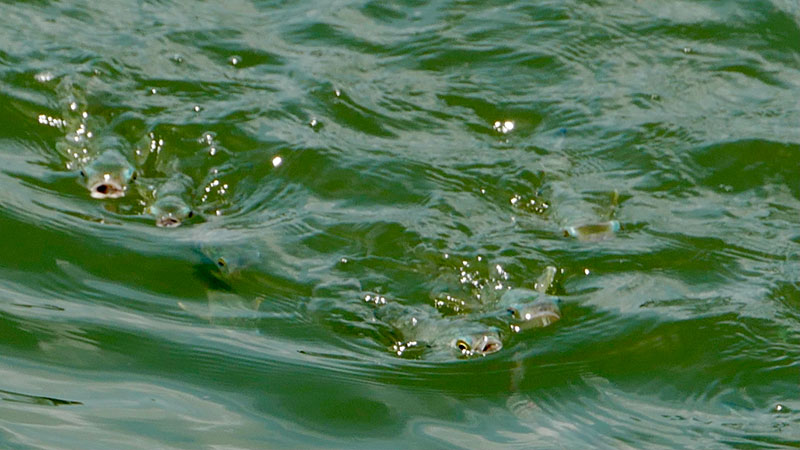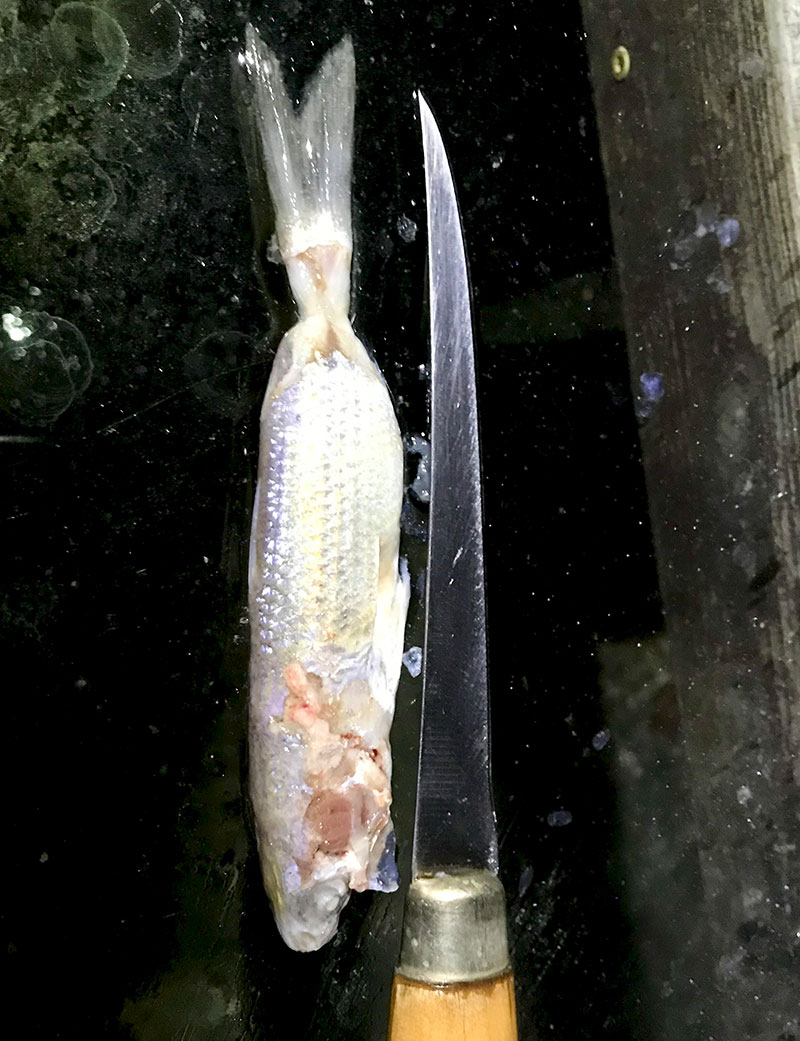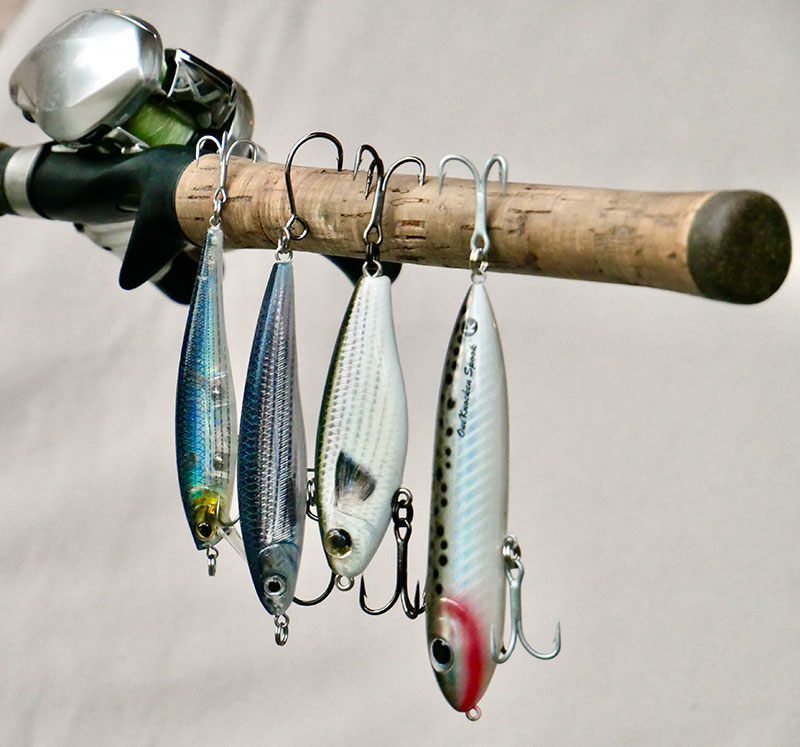
Striped mullet are recognizable as the leisurely jumping fish.
You can track a single mullet’s progress down the rocks of the MRGO as they exit the water every 10 feet or so.
Why they jump must be one of life’s biggest mysteries, because knowledgable people can not agree on the reason. A lot of people say they are evading predators with this jumping behavior. Really? I have seen plenty of mullets jumping after getting spooked out of their minds by predators and it never looks leisurely like the singular jumping mullet.

Other experts say they jump to clear their gills and give themselves an oxygen boost in oxygen-poor water. I really doubt that the water in the MRGO is regularly low in oxygen, so it is just as likely that singular mullet jump out of the water for the same reasons humans jump into the water. It makes them happy.
Speck food
The most important thing to know about mullet is that they are a favorite food for speckled trout in the spring.
For that reason we watch for them and fish around their schools in March. Especially of interest to trout anglers are the size we call finger mullet. These 3-5 inch long versions are basically fish sticks for hungry gator trout.

Striped mullet are a filter feeding fish that mostly lives on zooplankton, benthic (bottom-dwelling) organisms, detritus (dead plants and animals), and small invertebrates. They can be caught with hook and line and I have on several occasions set the hook of my swim-bait into the lip of a large mullet. In Florida, where people catch them for consumption, no doubt because the limits of speckled trout are so low, anglers use dead shrimp on small hooks to catch mullet.
Striped mullet spawn in the winter months in the Gulf of Mexico and juveniles of 0.5 inch to 1-inch long return to the marsh where they spend their first year. In Louisiana, I believe that the finger mullet size is around 1-year-old in March, and at that size they stay in large schools for protection. Their abundance, size, and presence in the springtime nicely fills the protein gap between the mature white shrimp and brown shrimp seasons.
They get big
Fully mature mullet are generally too large for my interest as a trout angler because they can be as large as a medium sized speckled trout. Can you believe that the largest striped mullet ever captured was 47.2 inches long and weighed 17.6 pounds!
Do-it-yourself live bait fishermen in Louisiana will net the finger mullet in the spring and use them live for speckled trout fishing. I can attest to the effectiveness of this method, because I caught a 4-pound trout at the MRGO dam on a live finger mullet.
While the finger mullet are a major part of a trout’s diet in the spring, gator trout are known to eat even larger mullet, and I have witnessed a 7-inch mullet come out of the stomach of a 3-pound trout. Schools of finger mullet are very useful to anglers because they are easily observable from the boat. We can be assured that any trout in the area will also sense their presence and that helps us find the trout.

These schools of mullet often hang around structure like bridge pilings and rock shorelines and in the widgeon grass beds. When feeding, they will swim as a school with their little round mouths open and eyes visible above the surface as they slurp down zooplankton and algae. Casting a lure near a school will occasionally elicit a violent strike from a gator trout.
There are a good selection of artificial lures designed to mimic mullet in color or behavior or both. Two lures I use often are the MirrOLure C-EYES CS27 and the Berkley Cutter 90, both which come in a Mullet pattern. With the CS27 I can fish the upper 1-3 feet of the water column and with the Cutter 90 target from 3-6 three feet of water depth.
Almost any topwater stick-bait doing the walk-the-dog is an excellent impersonation of a mullet swimming on the surface, and so topwater is one of my go-to presentations for spring trout fishing.


